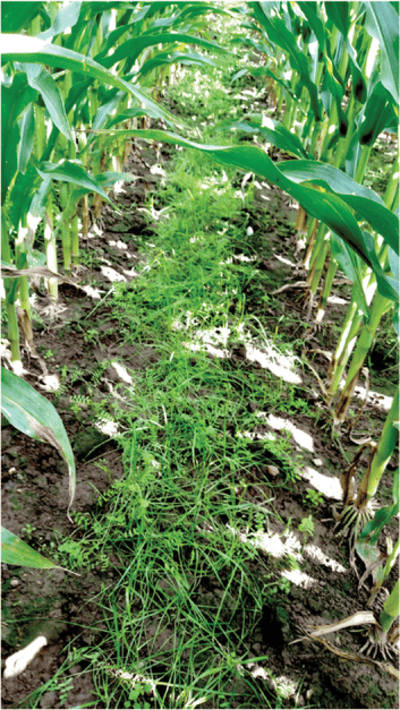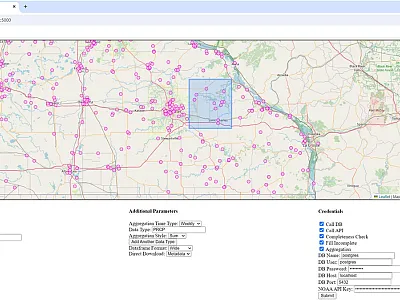Interseeding Extends the Cover Crop Growing Window

Cover crops are typically planted after harvest of the main crop to promote soil health. However, in certain growing regions, the short time between harvest and frost makes it difficult to plant cover crops. To overcome these so‐called “narrow cover‐cropping windows,” growers are experimenting with interseeding, in which cover crops are planted between rows of the main crop during the summer. Still, there is concern that the cover crops might take away nutrients from the main crop.
To address these questions, researchers investigated how interseeding several different cover crops alone or combined into corn affected nitrogen cycling in the soil. They tested if cover crops competed with corn for nutrients and found that interseeding did not impact corn growth or reduce soil nitrogen. Through repeated sampling over 12 site‐years, they found that the effects of soil carbon on nitrogen cycling were stronger than the effect of cover crops.
This study supports interseeding as a viable strategy for cover cropping though the proper timing of cover crop seeding in relation to precipitation is essential, and it may take a while before soil health benefits are consistently observed.
Adapted from
Curtright, A. J., Renner, K. A., & Tiemann, L. K. (2024). Availability of dissolved organic carbon drives differences in microbial nitrogen‐cycling processes between two sites with cover crops interseeded into corn. Soil Science Society of America Journal, 88, 56–70. https://doi.org/10.1002/saj2.20604
Text © . The authors. CC BY-NC-ND 4.0. Except where otherwise noted, images are subject to copyright. Any reuse without express permission from the copyright owner is prohibited.







